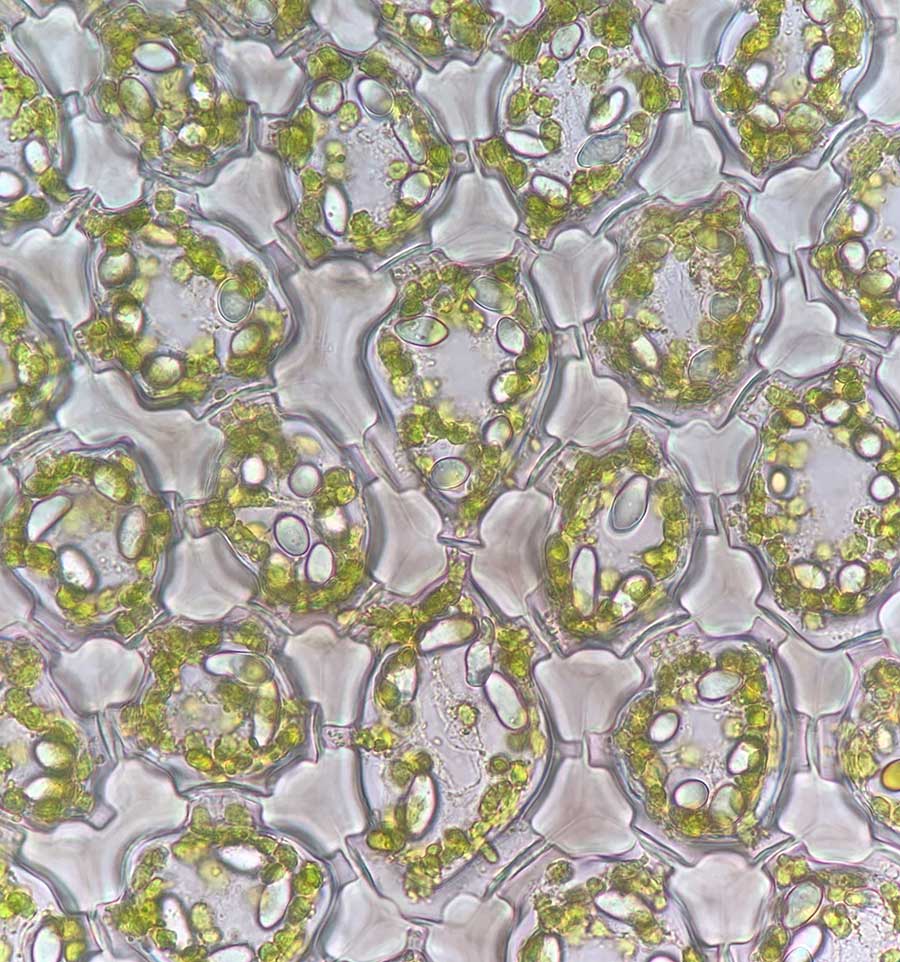 |
|
A group of leaf cells of a moss under a microscope. [Photo by Ma Wenzhang/China Daily] |
A passion grows
Ma liked to observe plants and insects when he was a kid. He studied conservation of water and soil and desertification control at Northwest Agriculture and Forestry University in Yangling, Shaanxi province.
He moved to Yunnan in 2004 to study his master's and doctoral degrees in ecology at Xishuangbanna Tropical Botanical Garden, Chinese Academy of Sciences, and started to learn more about moss, which became his main focus after graduation.
Even though moss species are small, they are one of the oldest plants on Earth, showing up 400 million years ago, 150 million years earlier than dinosaurs. According to Ma, there are more than 20,000 species of bryophytes, and China has around 3,400 to 3,600 species. He has collected samples of roughly 2,000 species so far.
Ma thinks bryophytes play a vital role in regulating ecosystems because they provide an important buffer system for other plants, as well as being pioneers by growing in environments that higher plants can't survive.
"Bryophytes also support biodiversity on Earth," Ma says. "They can be found in cities and villages and also can be made into a decoration in our homes."
A new moss genus from Shangri-La of Diqing Tibet autonomous prefecture, Yunnan province, which was discovered by Ma, was named after him in 2018-Mawenzhangia thamnobryoides-a great honor for a specimen worker.
Ma thinks to collect moss fits the Pareto principle-to find the 20 percent of rare species takes four times as long as finding a common species. "When you see a really good sample, you will be amazed by its shining light," he says.